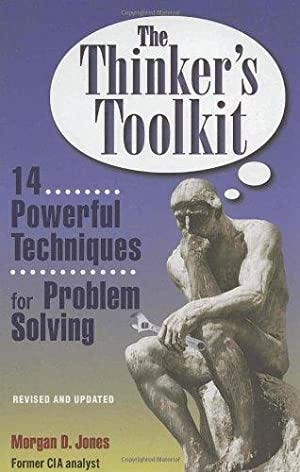
Salam everyone. Happy Friday.
I always preach analysis over more information. Digestion over consumption. If you eat more than your metabolism can handle, you will feel bloated. You need to exercise to burn that fat and actually build the muscle.
What you need is better connections. After you analyze it sufficiently, you can build your repository of dots.

(this illustration is part of my advice for researchers)
This is also Morgan Jones’ main message in his book ‘The Thinker’s Toolkit’. He's an ex-CIA analyst who emphasizes structure of analysis. His notions of the limitations of cognitive processing are well grounded - and I can tell he’s speaking from the operation room.

I stumbled upon this book when I was looking for techniques to break a problem apart. It struck me as very practical and useful. If you enjoyed classic cognitive science books (e.g. Thinking Fast Slow), you’ll enjoy this super valuable, practical read.
Without any further, here are the techniques:
14 Techniques to Analyze and Solve Problems:
Problem Restatement: Drill to the real problem. Is it your son’s grades that’s the problem, or an emotional issue leading him to this performance?
Pros-Cons-and-Fixes: Adjust your bias by listing the good and the bad, and the ‘fixes’ to what’s bad.
Divergent/Convergent Thinking: Brainstorm, then narrow down the scope. It’s a classic design thinking technique.
Sorting, Chronologies, and Time Lines: Crucial technique for analyzing events — you can’t infer things if there isn’t a narrative.
Causal Flow Diagramming: Identify major factors. Identify cause-and-effect-relationships. Characterize the relationships as direct or inverse. Make a diagram. Analyze the behavior of the relationships as an integrated system.
The Matrix: (not the movie : ) This versatile tool helps you break down any problem using any aspects (types, causes, comparisons … ).
The Scenario Tree: Make a tree of “What happens if …. ?”s
Weighted Ranking: What are you ranking and what factors change the score?
Hypothesis Testing: List your questions, try to find/get evidence, cross out hypothesis which doesn’t match.
Devil’s Advocate: Challenge yourself, factually and emotionally.
The Probability Tree: Like a Scenario Tree but with probabilities.
The Utility Tree: Technique to maximize any returns.
The Utility Matrix: An upgrade on utility-analysis to help with perception of the problem and calculation of the solution.
Advanced Utility Analysis: Upgrading utility-analysis by using several perspectives.
I queued this book under the list of things I’ll do a visual summary for. But that’s in the distant-near future.
If you want to be a better thinker, this is worth your read.
